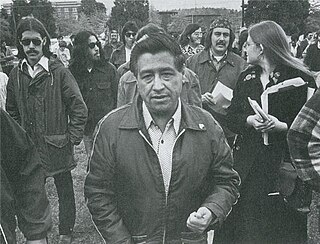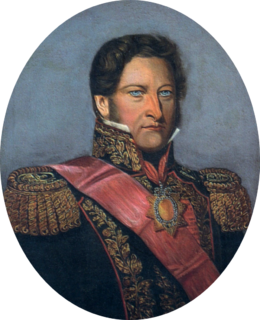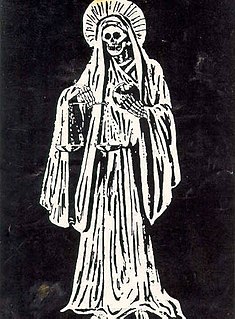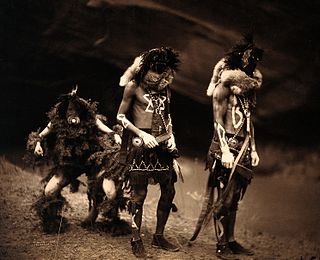
Chicano or Chicana is a chosen identity for many Mexican Americans in the United States. The label Chicano is sometimes used interchangeably with Mexican American, although the terms have different meanings. While Mexican-American identity emerged to encourage assimilation into White American society and separate the community from African-American political struggle, Chicano identity emerged among anti-assimilationist youth, some of whom belonged to the Pachuco subculture, who claimed the term. Chicano was widely reclaimed in the 1960s and 1970s to express political empowerment, ethnic solidarity, and pride in being of Indigenous descent, diverging from the more assimilationist Mexican American identity. Chicano Movement leaders collaborated with Black Power movement. Chicano youth in barrios rejected cultural assimilation into whiteness and embraced their identity and worldview as a form of empowerment and resistance.

Cuauhtémoc, also known as Cuauhtemotzín, Guatimozín, or Guatémoc, was the Aztec ruler (tlatoani) of Tenochtitlan from 1520 to 1521, making him the last Aztec Emperor. The name Cuauhtemōc means "one who has descended like an eagle", and is commonly rendered in English as "Descending Eagle", as in the moment when an eagle folds its wings and plummets down to strike its prey. This is a name that implies aggressiveness and determination.

Moctezuma I, also known as Moteuczomatzin Ilhuicamina, Huehuemoteuczoma or Montezuma I, was the second Aztec emperor and fifth king of Tenochtitlan. During his reign, the Aztec Empire was consolidated, major expansion was undertaken, and Tenochtitlan started becoming the dominant partner of the Aztec Triple Alliance. Often mistaken for his popular descendant, Moctezuma II, Moctezuma I greatly contributed to the famed Aztec Empire that thrived until Spanish arrival, and he ruled over a period of peace from 1440 to 1453. Moctezuma brought social, economical, and political reform to strengthen Aztec rule, and Tenochititlan benefited from relations with other cities.

Tenochtitlan, also known as Mexico-Tenochtitlan, was a large Mexica altepetl in what is now the historic center of Mexico City. The exact date of the founding of the city is unclear. The date 13 March 1325 was chosen in 1925 to celebrate the 600th anniversary of the city. The city was built on an island in what was then Lake Texcoco in the Valley of Mexico. The city was the capital of the expanding Aztec Empire in the 15th century until it was captured by the Spanish in 1521.

Tejanos are the residents of the state of Texas who are culturally descended from the Mexican population of Tejas and Coahuila that lived in the region prior to it becoming what is now known as the state of Texas before it became a US state in 1845. The term is also sometimes applied to all Texans of Mexican descent.

Aztlán is the ancestral home of the Aztec peoples. Aztecah is the Nahuatl word for "people from Aztlan". Aztlan is mentioned in several ethnohistorical sources dating from the colonial period, and while they each cite varying lists of the different tribal groups who participated in the migration from Aztlan to central Mexico, the Mexica who went on to found Mexico-Tenochtitlan are mentioned in all of the accounts. Historians have speculated about the possible location of Aztlan and tend to place it either in northwestern Mexico or the Southwestern United States, although there are doubts about whether the place is purely mythical or represents a historical reality.

The city now known as Mexico City was founded as Mexico Tenochtitlan in 1325 and a century later became the dominant city-state of the Aztec Triple Alliance, formed in 1430 and composed of Tenochtitlan, Texcoco, and Tlacopan. At its height, Tenochtitlan had enormous temples and palaces, a huge ceremonial center, residences of political, religious, military, and merchants. Its population was estimated at least 100,000 and perhaps as high as 200,000 in 1519 when the Spaniards first saw it.

The Aztec Empire or the Triple Alliance was an alliance of three Nahua altepetl city-states: Mexico-Tenochtitlan, Tetzcoco, and Tlacopan. These three city-states ruled that area in and around the Valley of Mexico from 1428 until the combined forces of the Spanish conquistadores and their native allies who ruled under Hernán Cortés defeated them in 1521.

The Chicano Movement, also referred to as El Movimiento, was a social and political movement in the United States inspired by prior acts of resistance among people of Mexican descent, especially of Pachucos in the 1940s and 1950s, and the Black Power movement, that worked to embrace a Chicano/a identity and worldview that combated structural racism, encouraged cultural revitalization, and achieved community empowerment by rejecting assimilation. Before this, Chicano/a had been a term of derision, adopted by some Pachucos as an expression of defiance to Anglo-American society. With the rise of Chicanismo, Chicano/a became a reclaimed term in the 1960s and 1970s, used to express political autonomy, ethnic and cultural solidarity, and pride in being of Indigenous descent, diverging from the assimilationist Mexican-American identity. Chicanos also expressed solidarity and defined their culture through the development of Chicano art during El Movimiento, and stood firm in preserving their religion.

In Hispanic America, Criollo is a term used originally to describe people of Spanish descent born in the colonies. In different Latin American countries the word has come to have different meanings, sometimes referring to the local-born majority.

The Aztecs were a Pre-Columbian Mesoamerican people of central Mexico in the 14th, 15th, and 16th centuries. They called themselves Mēxihcah.
Chicano nationalism is the pro-indigenist ethnic nationalist ideology of Chicanos. While there were nationalistic aspects of the Chicano Movement of the 1960s and 1970s, the movement tended to emphasize civil rights and political and social inclusion rather than nationalism. For this reason, Chicano nationalism is better described as an ideology than as a political movement.
I Am Joaquin, by Rodolfo "Corky" Gonzales and translated by Juanita Dominguez, is a famous epic poem associated with the Chicano movement of the 1960s in the United States. In I am Joaquin, Joaquin speaks of the struggles that the Chicano people have faced in trying to achieve economic justice and equal rights in the U.S, as well as to find an identity of being part of a hybrid mestizo society. He promises that his culture will survive if all Chicano people stand proud and demand acceptance.

Skull art is found in various cultures of the world.

Native American religions are the spiritual practices of the Native Americans in the United States. Ceremonial ways can vary widely and are based on the differing histories and beliefs of individual nations, tribes and bands. Early European explorers describe individual Native American tribes and even small bands as each having their own religious practices. Theology may be monotheistic, polytheistic, henotheistic, animistic, shamanistic, pantheistic or any combination thereof, among others. Traditional beliefs are usually passed down in the forms of oral histories, stories, allegories, and principles.

Borderlands/La Frontera: The New Mestiza is a 1987 semi-autobiographical work by Gloria E. Anzaldúa that examines the Chicano and Latino experience through the lens of issues such as gender, identity, race, and colonialism. Borderlands is considered to be Anzaldúa’s most well-known work and a pioneering piece of Chicana literature.

Antonio Velasco Piña was a Mexican novelist, spiritual writer and essayist.
Chicana literature is a form of literature that has emerged from the Chicana Feminist movement. It aims to redefine Chicana archetypes in an effort to provide positive models for Chicanas. Chicana writers redefine their relationships with what Gloria Anzaldúa has called "Las Tres Madres" of Mexican culture by depicting them as feminist sources of strength and compassion.

The Chicano Art Movement represents groundbreaking movements by Mexican-American artists to establish a unique artistic identity in the United States. Much of the art and the artists creating Chicano Art were heavily influenced by Chicano Movement which began in the 1960s.

The History of Mexico is a mural in the stairwell of the National Palace in Mexico City by Diego Rivera. Produced between 1929 and 1935, the mural depicts Mexico's history from ancient times to the present, with particular emphasis on the struggles of the common Mexican people fighting against the Spanish, the French, and the dictators that controlled the country at different points in its history.


















